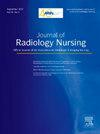Addressing Moral Distress and Moral Injury in Healthcare: Implications for Workforce Well-Being and Systemic Change
Q3 Nursing
引用次数: 0
Abstract
Moral distress (MD) and moral injury represent significant challenges within healthcare, affecting both individual well-being and organizational performance. MD arises when healthcare providers are constrained from acting in alignment with their ethical beliefs, whereas moral injury reflects deeper, long-lasting harm resulting from violations of core moral values. These phenomena have profound implications for workforce mental health, patient care quality, and institutional stability, particularly in high-stakes settings like intensive care units. Addressing these challenges requires systemic interventions, including robust ethics resources, leadership engagement, and targeted training programs to mitigate distress and foster resilience. Measuring MD and injury through validated tools is critical for identifying systemic contributors and tailoring interventions effectively. This article highlights evidence-based strategies, such as MD consultations, ethics education, and resilience training, to support healthcare professionals, enhance ethical climates, and improve patient care outcomes. By prioritizing the mitigation of MD and injury, healthcare organizations can cultivate a more resilient, compassionate workforce and a higher standard of ethical care.
解决医疗保健中的道德困境和道德伤害:对劳动力福祉和系统变化的影响
道德困扰(MD)和道德伤害是医疗保健中的重大挑战,影响个人福祉和组织绩效。当医疗保健提供者的行为受到限制,无法与他们的道德信仰保持一致时,就会出现医学缺陷,而道德伤害则反映了违反核心道德价值观所造成的更深层次、持久的伤害。这些现象对劳动力心理健康、患者护理质量和机构稳定性有着深远的影响,特别是在重症监护病房等高风险环境中。应对这些挑战需要系统性的干预措施,包括健全的道德资源、领导参与和有针对性的培训计划,以减轻痛苦和培养韧性。通过经过验证的工具测量MD和损伤对于识别系统因素和有效定制干预措施至关重要。本文重点介绍了循证策略,如医学博士咨询、道德教育和恢复力培训,以支持医疗保健专业人员,增强道德氛围,改善患者护理结果。通过优先考虑减轻疾病和伤害,医疗保健组织可以培养更有弹性、更有同情心的员工队伍和更高的道德护理标准。
本文章由计算机程序翻译,如有差异,请以英文原文为准。
求助全文
约1分钟内获得全文
求助全文
来源期刊

Journal of Radiology Nursing
Nursing-Advanced and Specialized Nursing
CiteScore
0.80
自引率
0.00%
发文量
95
审稿时长
57 days
期刊介绍:
The Journal of Radiology Nursing promotes the highest quality patient care in the diagnostic and therapeutic imaging environments. The content is intended to show radiology nurses how to practice with compassion, competence, and commitment, not only to patients but also to the profession of nursing as a whole. The journal goals mirror those of the Association for Radiologic & Imaging Nursing: to provide, promote, maintain , and continuously improve patient care through education, standards, professional growth, and collaboration with other health care provides.
 求助内容:
求助内容: 应助结果提醒方式:
应助结果提醒方式:


